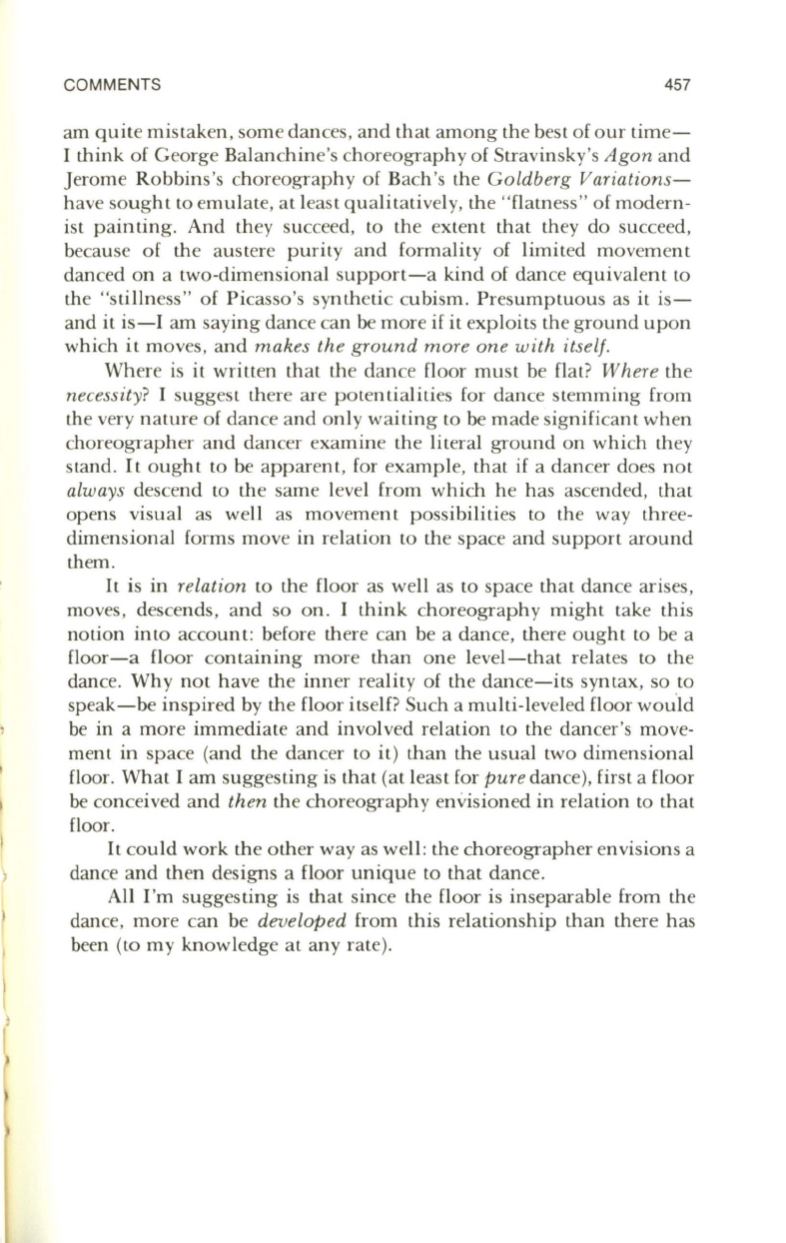
(
)
COMMENTS
457
am quite mistaken, some dances, and that among the bes t of our time–
I think of George Balanchine's choreograph y of Stravinsky's
Agon
and
Jerome Robbins 's choreography of Bach's the
Goldberg Variations–
have sought to emulate, at leas t qualitatively, the " flatness " of modern–
ist painting. And they succeed,
to
the extent that they do succeed,
because of the austere purity and formality of limited movement
danced on a two-dimensional support-a kind of dance equivalent to
the "stillness " of Picasso's synthetic cubism. Presumptuous as it is–
and it is-I am saying dance can
be
more if it exploits the ground upon
which it moves, and
makes the ground more one with itself.
Where is it written that the dance floor must be flat?
Where
the
necessity?
I suggest there are potentialities for dance stemming from
the very nature of dance and only waiting to
be
made significant when
choreographer and dancer examine the literal ground on which they
stand. It ought to be apparent, for example, that if a dancer does not
always
descend to the same level from which he has ascended, that
opens visual as well as movement possibilities to the way three–
dimensional forms move in relation to the space and support around
them.
It is in
relation
to the floor as well as to space that dance arises,
moves, descends, and so on. I think choreography might take this
notion into account: before there can be a dance, there ought to be a
floor-a floor containing more than one level-that relates
to
the
dance. Why not have the inner reality of the dance-its syntax, so to
speak-be inspired by the floor itself? Such a multi-leveled floor wou'ld
be in a more immediate and involved relation to the dancer 's move–
ment in space (and the dancer to it) than the usual two dimensional
floor. What I am suggesting is that (at least for
pure
dance), first a floor
be conceived and
then
the choreography envisioned in relation to that
floor.
It could work the other way as well: the choreographer envisions a
dance and then designs a floor unique to that dance.
All I'm suggesting is that since the floor is inseparable from the
dance , more can be
developed
from this relationship than there has
been (to my knowledge at any rate).


